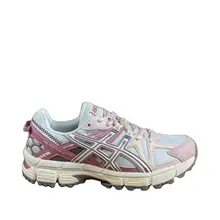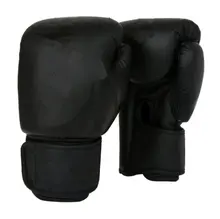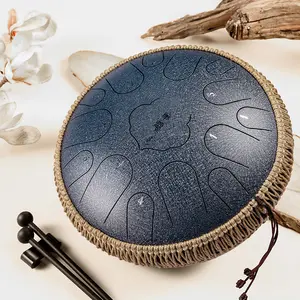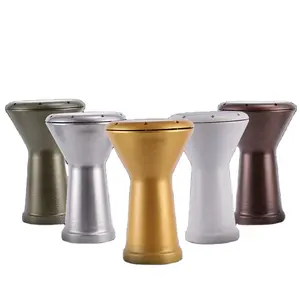The darbuka drum, a timeless and versatile percussion instrument, has etched its rhythmic presence across diverse cultures and musical genres. Originating from the middle east, this hand-played drum, also known as a goblet drum, has transcended geographical boundaries to become a global symbol of rhythmic expression. At the heart of countless musical traditions, the darbuka drum is characterized by its goblet-shaped body and a single, exposed playing surface. Crafted from various materials, including metal, wood, and ceramic, the darbuka resonates with a rich, penetrating sound. The simplicity of its design belies the complexity of the rhythms it produces, making it popular among percussionists, both amateur and professional. From traditional middle eastern music to contemporary fusion genres, the darbuka's distinct timbre adds a layer of authenticity and depth to a wide array of musical compositions.
Varieties of the darbuka drum
One of the revered variations of the darbuka is the ceramic darbuka, celebrated for its craftsmanship and unique tonal qualities. Crafted from clay and fired in a kiln, the ceramic darbuka resonates with a warm and earthy sound. The intricate patterns and designs adorning its surface not only contribute to its visual appeal but also reflect the artisanal care that goes into its creation. Ceramic darbukas are often favored for their responsiveness and the ability to produce nuanced tones, making them a prized choice for both traditional and contemporary musical contexts.
In the diverse family of darbuka drums, the black darbuka stands out as a visually striking and sonically captivating variant. Crafted from materials such as metal or wood, the black darbuka's distinctive color is often achieved through a combination of finishes or coatings. This visually striking instrument not only captivates the eyes but also delivers a sharp and resonant sound. The black darbuka's popularity extends across various musical genres, from traditional middle eastern ensembles to modern fusion bands, making it a versatile and eye-catching addition to any percussionist's repertoire.
Materials used to craft the darbuka drum
Darbuka drum heads can be crafted from a variety of materials, each contributing distinct tonal qualities to the instrument. Traditional darbukas often feature drum heads made from natural materials such as goat or fish skin. The use of natural skin imbues the darbuka with warm and authentic tones, creating a connection to ancient traditions. However, modern darbukas frequently utilize synthetic materials, such as mylar or other plastics, offering increased durability and consistency. The choice of materials becomes a fundamental decision for percussionists, shaping the sonic palette of the darbuka and influencing its suitability for different musical genres.
The allure of the darbuka lies not only in its physical form but also in the captivating rhythms it produces. Across the middle east and beyond, the darbuka drum has embedded itself in various musical traditions, each with its distinct rhythmic patterns. From the lively and intricate beats of Arabic music to the pulsating rhythms of Turkish folk music, the darbuka's versatility allows it to integrate into diverse genres seamlessly. Percussionists master an extensive repertoire of darbuka drum rhythms, creating a dance of hands and beats that forms the backbone of countless musical compositions.









































 浙公网安备 33010002000092号
浙公网安备 33010002000092号 浙B2-20120091-4
浙B2-20120091-4